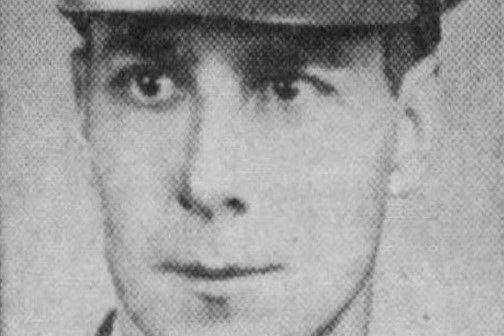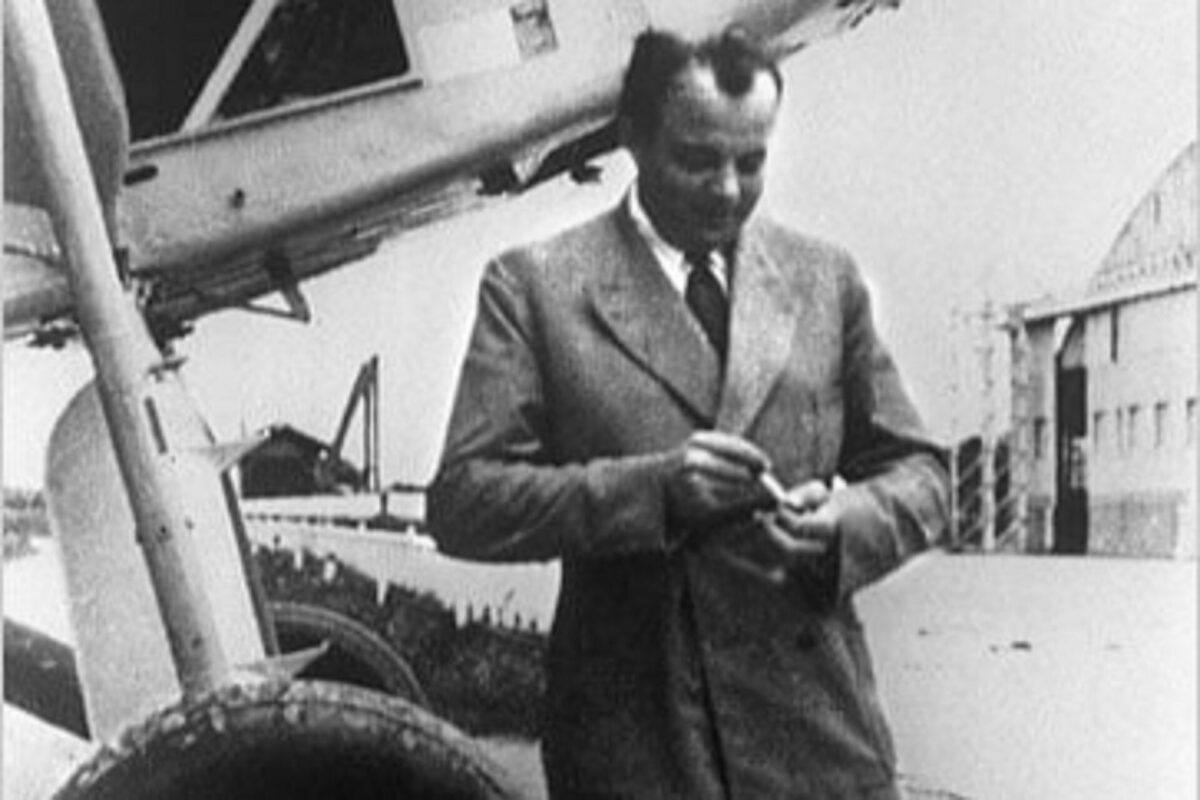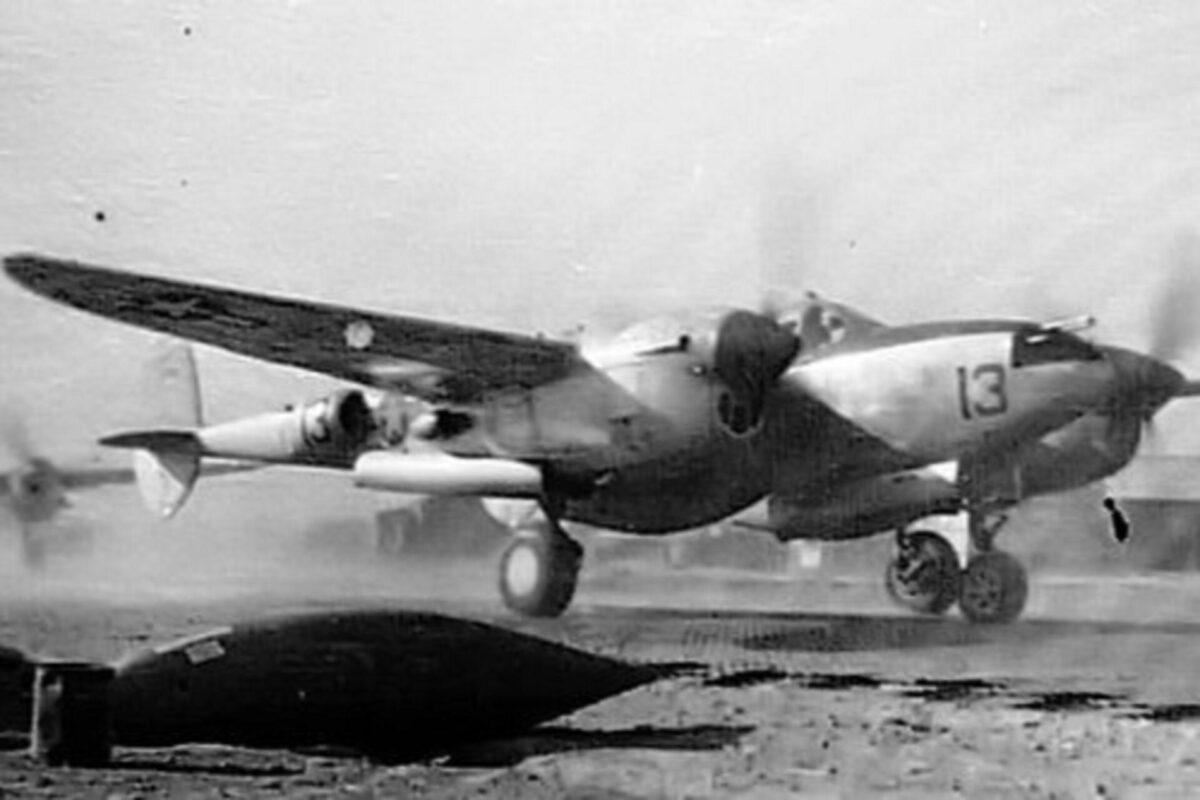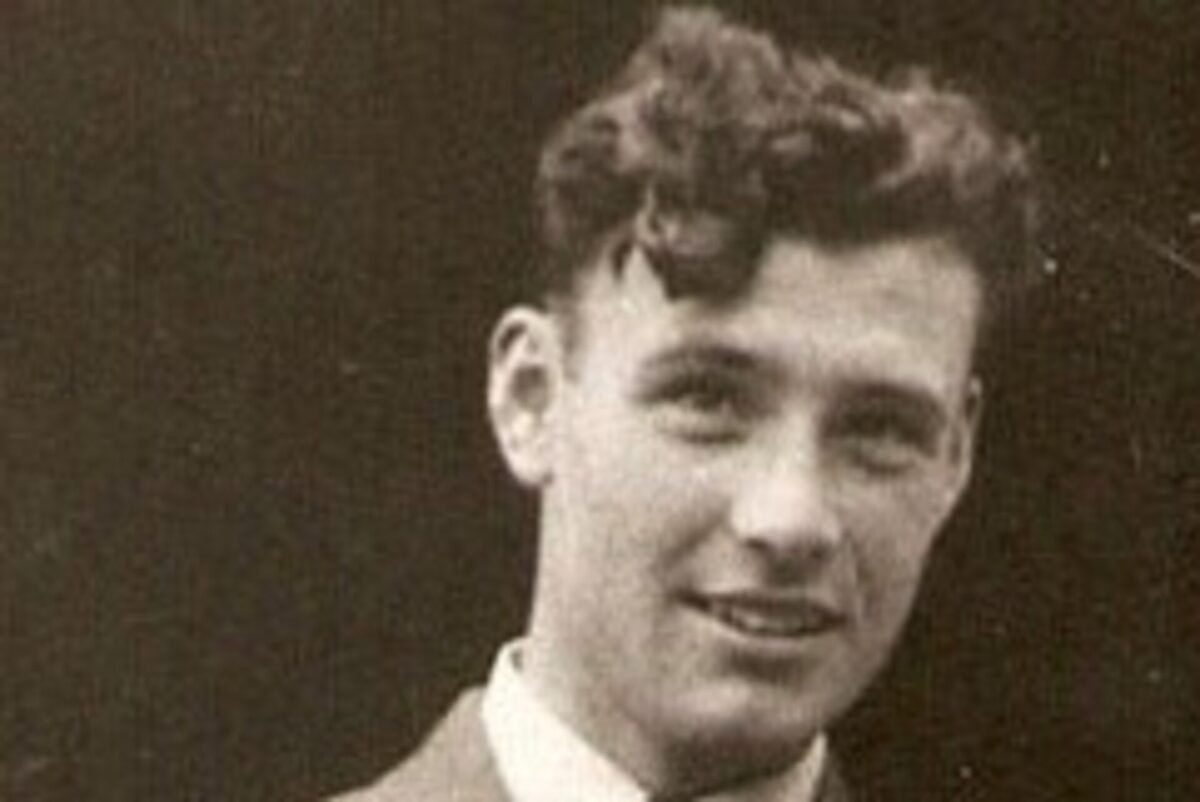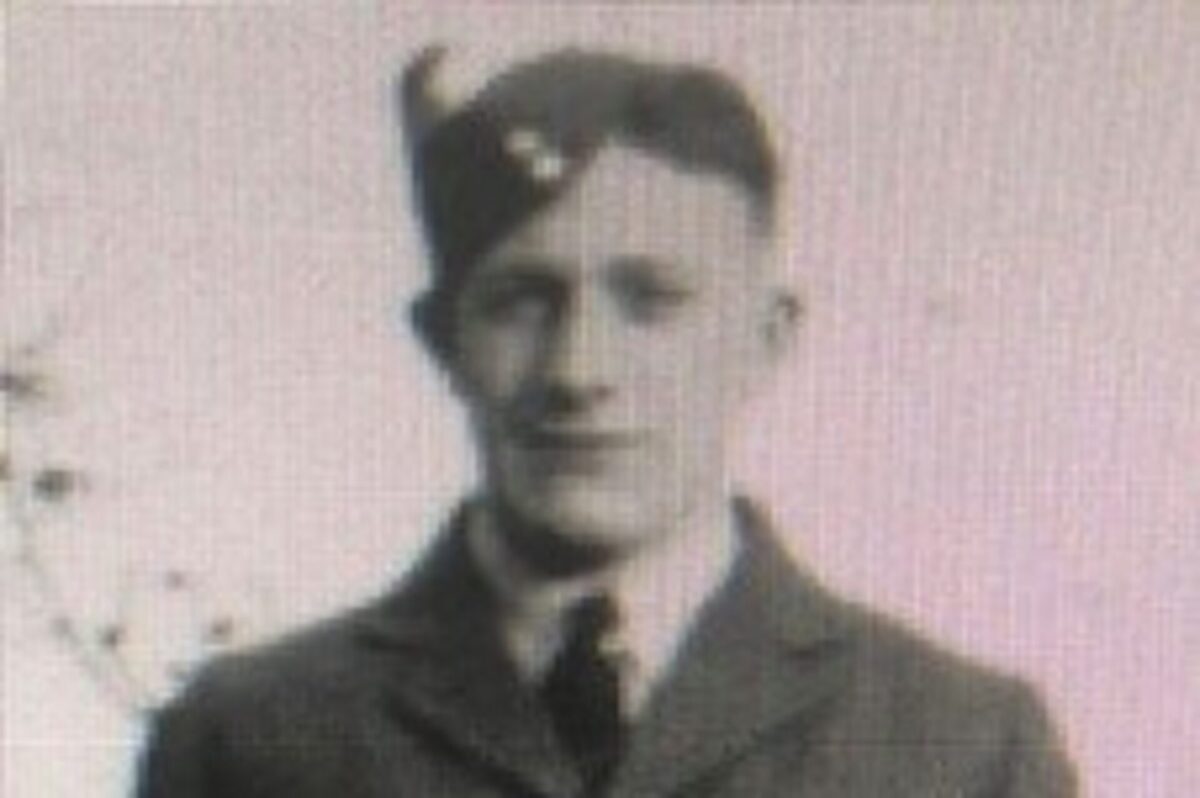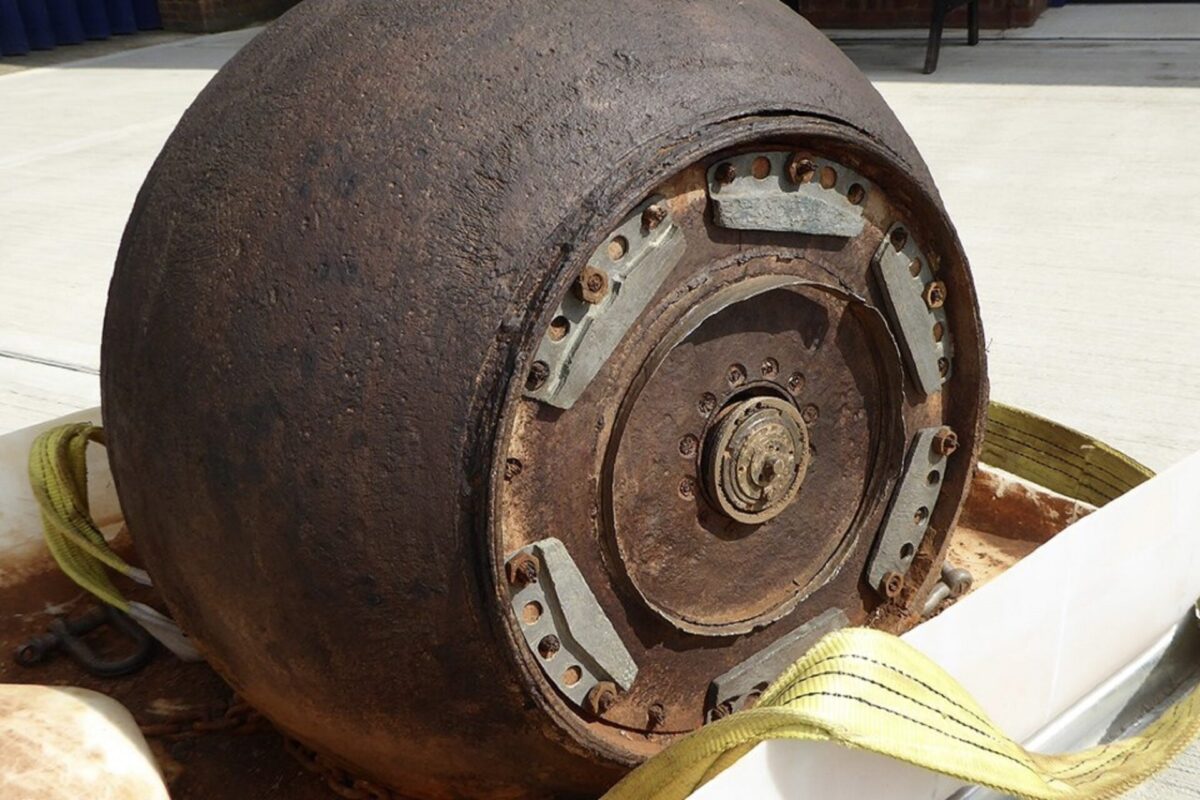As nations around the world commemorate 80 years since Germany officially surrendered all military operations involved in World War II, thoughts understandably turn to those who fought and lost their lives in battle.
From the six years of fighting, some extraordinary stories of courage and heroism have come to light, many of which have helped to inspire people to overcome adversity and confront the challenges that life throws at us all.
The sad and undeniable reality though is that World War II will be most remembered for its violence and bloodshed, with far too many tales of loss and tragedy.
Of all the World War II stories that unfolded, even today some remain shrouded in mystery with unanswered questions about the fate of brave service personnel.
Cranfield University has said that as many as 72,000 US personnel alone are still unaccounted for from World War II, with around 39,000 deemed to be recoverable.
Often, some of the most poignant World War II mysteries involve Allied air forces pilots and crew who failed to return to base or disappeared on daring missions, seemingly never to be found.
Mission to Sciacca Aerodrome
On July 10, 1943, 2nd Lt Gilbert Haldeen Myers, a co-pilot aboard a US B-25 Mitchell bomber flew out from Dar el Koudia Airfield in Tunisia, North Africa, on a daring mission to strike the Sciacca Aerodrome in Sicily.
The 27-year-old joined the US Army Air forces in Florida and served in the 381st Bombardment Squadron, 310th Bombardment Group.
According to the Defense POW/MIA Accounting Agency (DPAA), as the B-25 Mitchell rained bombs down on its target, it was struck by enemy anti-aircraft fire, causing it to lose altitude rapidly.
Badly damaged, the B-25 Mitchell crashed and exploded in a field around one and a half miles from the Sciacca Aerodrome. There were no survivors.
Witnesses claimed that, before the aircraft crashed, a single crew member had been seen bailing out, but a body was ever found and there were no records of an airman being taken prisoner in the area.
According to Cranfield University, in 1947 investigators conducted search and recovery operations near Sciacca, but could not locate anything linking back to Myers.
In September 1943, US investigators were able to identify the main pilot after news that locals had recovered his body and buried him in the Sciacca municipal cemetery.
In 1944, the mystery around the fate of the crew deepened when a US report indicated that the wreckage of the B-25 Mitchell had been found but there were no human remains.
During the 1940s, representatives from the American Graves Registration Service (AGRS) were told that German soldiers had removed three bodies from the crash site but there was no lead on the whereabouts of the deceased.
The following decades passed without any serious breakthrough being made, but in 2021 and 2022 teams from DPAA and Cranfield University Recovery and Identification of Conflict Team (CRICC) returned to Sciacca to undertake a painstaking investigation.
The crash site had been identified in 2017, but the work scouring the vicinity surrounding the impact zone did not begin until the new team arrived.
The investigation involved meticulously examining tons of soil, searching for fragments of human remains or personal effects crucial for identifying crew members.
Finally, on October 8, 2023, investigators announced they had located human remains. After carrying out tests, it was established that they belonged to Lt Gilbert Haldeen Myers.
In St. Petersburg, Florida, in 2023, Myers was put to rest after many decades. Four crew members from the B-25 Mitchell crash still remain unaccounted for.
Saint-Exupéry – ‘The Little Prince’
When the author of ‘The Little Prince’, Antoine de Saint-Exupéry, rejoined the World War II effort in April 1943, he was 43 years old, but as a passionate aviator and proud Frenchman he was desperate to serve.
When World War II broke out, Saint-Exupéry flew a Bloch 174 aircraft on reconnaissance missions for the French Air Force. In 1940, he was forced to escape to the US following the German occupation of France.
When he finally returned to action in 1943, he was deployed once again as a reconnaissance pilot, based in North Africa. His aircraft this time was an F-5B, a reconnaissance variant of the Lockheed P-38 Lightning.
According to National WWII Museum in New Orleans, on July 31, 1944, in preparation for Operation Dragoon, the famous French aristocrat took off from Corsica to photograph Grenoble, France.
Saint-Exupéry was assigned to gather intelligence on German troop movements, but he never returned to his base. Eight days later he was declared missing in action, presumed dead.
Over the next 44 years, Saint-Exupéry’s disappearance remained a mystery, but in 1998 a chance encounter reinvigorated efforts to find out what happened.
In September 1998, a fisherman off the Marseille coast found Saint-Exupéry’s identity bracelet, inscribed with his and his wife’s names, plus those of the publisher, Reynal & Hitchcock.
However, there were doubts about the bracelet’s authenticity as it was found far from the flight path Saint-Exupéry had taken on July 31, 1944.
Two years later, in 2000, divers hit the jackpot when they discovered the remains of Saint-Exupéry’s aircraft in a similar area to that in which the bracelet had been found.
Bracelet of Saint-Exupéry found by the fisherman Jean-Claude Bianco in 1998. pic.twitter.com/3HoUiFUoze
— Bibliophilia (@Libroantiguo) March 9, 2015
According to a 2004 CBS News article, on impact with the sea the aircraft had broken into hundreds of fragments which lay up to 90 meters below the surface, just under two miles from the coast between Marseille and Cassis.
Subsequent investigations by underwater experts could not find any evidence among the debris to suggest that the aircraft had been shot down. In 2004, fragments of the wreckage were moved to the Musée de l’Air et de l’Espace in Paris.
Speculation over what caused the crash has raged for years and the subject of Saint-Exupéry’s fate will long continue to mystify the public.
A former Luftwaffe pilot claimed that he believed he shot Saint-Exupéry’s plane down, and in August 1944 there were reports that a body of an unidentified man dressed in a French uniform washed up near to where the bracelet was eventually found.
Glenn Miller – Death of a musical legend
Major Glenn Miller was an extremely popular famous US composer and musician who had a series of hits with his orchestra through the 1930s and 40s.
A highly accomplished trombone player, Miller became a US Army Air Force captain and the leader of a big band that played in front of troops to boost morale during World War II.
After spending time in England rousing troops at military bases, Miller and his band had plans afoot to travel to France following the liberation of Paris.
It was decided that Miller would travel ahead of his band and on December 15, 1944, he left RAF Twinwood Field aboard a Noorduyn C-64 Norseman aircraft.
Accompanying Miller was his friend Lieutenant Colonel Norman Baessell and at the controls was Flight Officer John R. Stuart Morgan.
The trio were on route to Villacoublay Aerodrome, Versailles, and were mapped flying over Beachy Head in East Sussex, but for some reason the C-64 Norseman failed to reach France.
According to Miller biographer and expert Dennis Spragg, the musician’s superiors did not realize he had disappeared for 72 hours, and his band arrived in Paris on December 18, 1944, unaware of their leader’s whereabouts.
1944:A Noorduyn C-64 Norseman carrying famed bandleader Maj Glenn Miller disappears over the English Channel. pic.twitter.com/ee6ENrjaxO
— Air Force Historical Foundation (@AFHF) December 15, 2017
As news began to spread of Miller’s disappearance, there was universal shock among his legions of fans, and when search efforts led to nothing, grief set in.
Over the years, speculation behind the cause of the crash has included rumors that it was hit by a jettisoned bomb from a Lancaster returning to England. Spurious claims even included reports that Miller had died of a heart attack in a brothel in Paris.
While the location of the aircraft wreckage remains unknown, Spragg has said there is no mystery behind what happened that fateful day.
On his website, Spragg detailed that a report from January 20, 1945, concluded that the aircraft went down over the English Channel, most likely due to pilot disorientation and icing leading to carburetor heater failure.
In 2019, a fisherman came forward who claimed to have pulled up the “whole plane” wreckage over 30 years earlier, but Spragg thinks this is unlikely.
“The Norseman was more likely to have disintegrated on impact […] Firstly, after forty years of immersion, the report of an intact airplane is highly unlikely. Secondly, after eighty years of immersion, it is virtually impossible,” wrote Spragg on his website.
Tragedy on North York Moors
On October 11, 1944, Pilot Officer Alfred Robert William Milne and Warrant Officer Eric Alan Stubbs, both 22, were flying a De Havilland Mosquito aircraft on a secret mission.
The pair had left RAF Beccles in Suffolk tasked with transporting a new explosive designed by the Dambuster bomb creator Barnes Wallis.
Named ‘Highball’, the new smaller bouncing bomb was designed to destroy ships but was in fact never used.
As Milne and Stubbs flew to RAF Turnberry in Ayrshire with the Highball onboard, it is believed that the Mosquito suffered a mechanical failure or ran out of fuel, crashing on the North York Moors near Bransdale, Helmsley.
In 2022, the BBC spoke with local military historian Richard Allenby who had witnessed the crash as a young man.
Recollecting the incident, he said the aircraft’s nose dipped before striking a hillside. Allenby said that the onboard bomb then rolled down the hill into a farm’s orchard, but thankfully did not explode.
Many years later, in March 2020, a family in Chop Gate, near Helmsley, around five miles from the crash site, went to check on a community septic tank in a next-door paddock after it became blocked.
While they investigated the blockage, they discovered a bone. When one of the family members recognized it as a jawbone, they decided to call the police.
Soon after, a joint investigation by North Yorkshire Police and the Ministry of Defense Police commenced which led to the discovery of further human remains and military memorabilia.
According to the Daily Mail, forensic teams were able to establish that the jawbone predated 1950, while the condition of the teeth indicated they had been looked after by the RAF, due to the high standard of work that was required to fly at altitude.
Forensic teams also found signs of impact injuries and staining from contact with a helmet or chinstrap.
Incredibly, detectives were able to match DNA samples taken from bone fragments spread across the field with those of relatives of Milne and Stubbs.
Following the Mosquito crash in 1944, it was believed that the remnants of the two airmen’s bodies were buried in Surrey, and that the wreckage and debris were simply buried within the crater.
However, it is thought that significant bone fragments of Milne and Stubbs must have remained at the crash site, though mystery surrounds why they had ended up five miles away in a field.
After the remains were found at Chop Gate, police officers arrested a 72-year-old man, but following an investigation, the Crown Prosecution Service (CPS) determined that there was not enough evidence to pursue the suspected offences against the individual.
In 2022, an inquest was held into the two young men’s deaths where evidence heard from experts said that the bones found were a secondary deposition – essentially, they had been moved from one place to another.
In reaching a conclusion of accidental death, the coroner said: “It’s 77 years since the end of the Second World War, and 78 years since this incident. This year would have been Sgt Stubbs’ centennial, and PO Milne’s would have been last year.”
They added: “This is a timely reminder to us all of those young men who made the supreme sacrifice during those difficult times, and it’s a reminder of the cost of war.”
The police later confirmed that the remains of Pilot Officer Milne and Warrant Officer Stubbs had been reunited with their families and given military burials.
North Yorkshire Police Detective Inspector Carol Kirk said: “At the beginning of this investigation, I don’t think any of us thought we’d be able to identify who the remains belonged to, let alone return them to their families and be given military burials with the dignity and respect that they deserved.”



